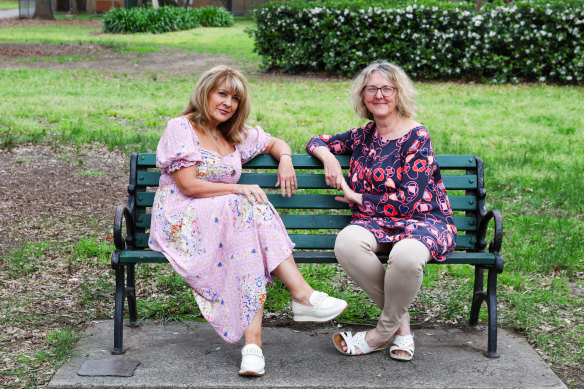This was published 7 months ago
The caregiving ‘tax’ hitting one in 10 Australians
By Millie Muroi
Like many who look after those who need them most, Meredith Coote took a financial hit when she stopped work to deal with her daughter’s complex mental health needs.
“It’s been six years, and for the first three or four, I really just thought: I’m just being a mum,” says Coote, the co-chair of the National Carer Strategy Advisory Committee. “Then slowly, I looked around, and we were no longer doing the things that other people are doing at this stage of their life. We were living in a parallel universe.”
Australians providing unpaid care to vulnerable relatives or friends are taking a short-term hit to their finances equivalent to a 10 percentage point tax increase, according to research by economics researchers e61 Institute.
About 2.5 million Australians, or 12 per cent of the working-age population, provide unpaid care to family members or others with disabilities, long-term health conditions or issues related to old age.

Carers Meredith Coote and Mary Ivec Credit: Edwina Pickles
The analysis found carers’ work hours fell by 1.3 hours a week on average in their first year of becoming a caregiver, cutting their weekly income by $20.
They were also less likely to remain in paid work, with 59.3 per cent employed in the year before they became caregivers, falling to 56 per cent afterwards.
“Our research finds a significant immediate decline in employment and hours of work when someone begins unpaid caring for someone else,” e61 research manager Pelin Akyol said.
“The dampening effect on working hours and employment in the first year is similar to what would happen if the workers experienced an income tax increase of 10 percentage points.”
As the Baby Boomer generation turns 80, the burden of caring for them is faced by an increasing number of Australians, battling for help from health and aged care services. The intergenerational report last year showed the share of the population aged 65 and over would increase by 6.1 percentage points to 23.4 per cent by 2062-63, while those aged 85 and over would make up 5 per cent of the population, up from 2.1 per cent.
Nearly one in five unpaid carers is aged 57, with both parents ageing and coping with the challenges confronting spouses, children, other relatives and friends.
Coote, who has worked in social care for 39 years, says taking on a carer role has meant making sacrifices in her personal and professional life.
“You become more and more isolated from your friends and community because you can’t have people to your home and if you are lucky enough to work, you’re just exhausted,” she says.
She has also lost significant income and superannuation entitlements, not to mention saying goodbye to paid leave. “You don’t get a break, you don’t get time off,” she says.
Despite it all, Coote says her family has been lucky to be able to spend so much time together.
“Our whole lives have been completely altered because of this role,” she says. “But my daughter is the most glorious, extraordinary human being.”
The e61 research found the large number of people drawn into informal caregiving duties might act as a handbrake on labour force participation.
The likelihood of being out of the labour force is 39 per cent for those with caregiving responsibilities, compared to 34 per cent for those without.
Cut through the noise of federal politics with news, views and expert analysis. Subscribers can sign up to our weekly Inside Politics newsletter.